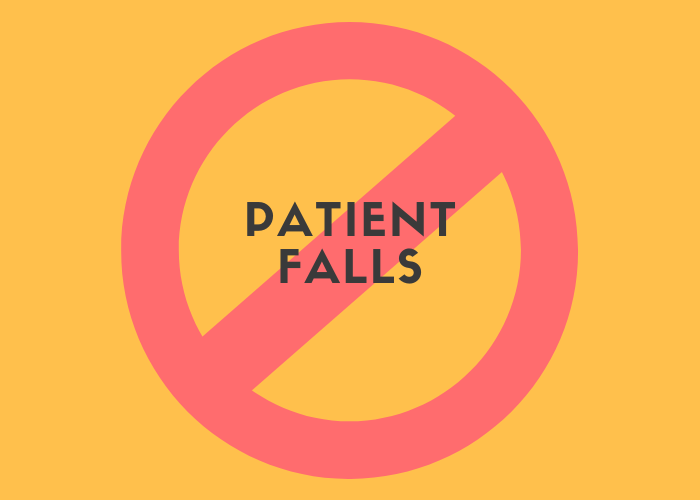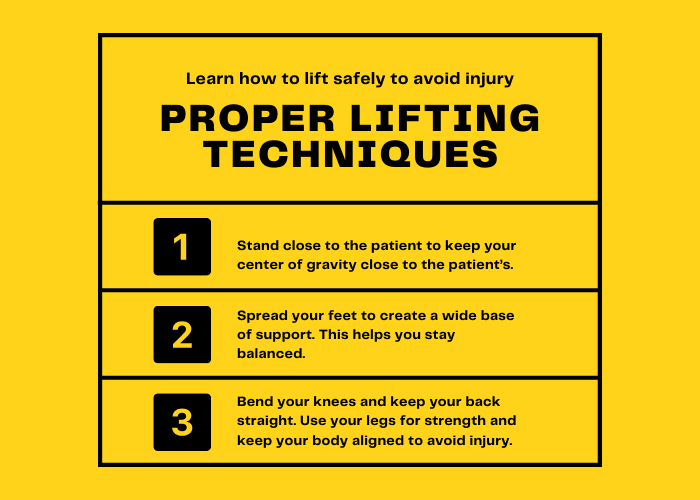
by editor | Aug 19, 2024 | Care Keys - Aides, Care Keys - Nurses, Care Keys - Social Workers
When taking care of patients in hospice, it’s important to understand the difference between over-the-counter (OTC) and prescription medications. Knowing how these medications work and what they’re used for can help you provide better care.
What Are Over-the-Counter Medications?
Over-the-counter (OTC) medications are medicines you can buy without a doctor’s prescription. These include things like pain relievers (like Tylenol or Advil), cold medicines, and allergy pills. People use OTC medications for common health problems like headaches, colds, or minor aches and pains. These medicines are generally safe when used as directed on the label. But it’s still important to be careful, especially when patients are taking other medications.
What Are Prescription Medications?
Prescription medications are medicines that a doctor or other healthcare provider must prescribe. These drugs are often stronger than OTC medicines and are used to treat more serious health conditions. Because they are stronger, they can have more side effects or cause harm if not taken exactly as prescribed. Patients in hospice care often take prescription medications to manage pain, control symptoms, or treat chronic conditions.
Key Differences Between OTC and Prescription Medications
- Access: You can buy OTC medications at a store without a prescription, but you need a doctor’s order to get prescription medications.
- Strength: Prescription medications are usually stronger and meant for more serious conditions.
- Safety: Both types of medications are safe when used correctly, but prescription medications require more careful monitoring because of their strength and potential side effects.
What Hospice Aides Need to Know About Medications
- Never Give Medications Without Approval: Always follow the care plan and never give a patient any medication, including OTC, without approval from a nurse or doctor.
- Be Aware of Interactions: Some OTC medications can interact with prescription drugs and cause problems. For example, taking aspirin (an OTC pain reliever) with certain prescription blood thinners can increase the risk of bleeding.
- Watch for Side Effects: Both OTC and prescription medications can have side effects. Be alert for any changes in the patient’s condition, and report anything unusual to the nurse or healthcare provider.
- Follow State Guidelines: Each state has specific rules about what hospice aides can and cannot do when it comes to assisting with medications. In some states, aides may help with medication reminders, but they should not give medications directly. Always follow the guidelines in your state and the care plan for each patient.
Where Can You Find Out More
- FDA: Understanding Over the Counter Medication
- Mayo Clinic: Prescription Drug Information

by editor | Aug 12, 2024 | Care Keys - Aides, Care Keys - Nurses
Burns and scalds are serious injuries that can happen to anyone, but they are especially dangerous for people who are sick or elderly. Understanding how these injuries occur and how to prevent them is a key part of your job as a hospice aide.
Burns can be caused by dry heat, such as touching a hot stove, getting too close to a fire, or even handling something like a heated blanket that is too hot. Scalds, on the other hand, are caused by wet heat. This means hot water, steam, or even hot drinks like coffee or tea can cause scalds. Sometimes, burns can also be caused by chemicals that are too strong or not used properly.
As a hospice aide, your goal is to keep your patients safe from these dangers. This means being aware of what can cause burns and scalds and knowing how to prevent them.
Understanding the Risks
As a hospice aide, it’s important to know that some patients are more likely to get burns and scalds than others. Understanding these risks will help you take the right steps to keep them safe.
Some patients, like older adults, have thinner and more fragile skin. This means they can get burned or scalded more easily, even from something that might not seem very hot to you. Patients who are bedridden or have limited movement might not be able to react quickly if something hot touches them. They may not be able to pull away from a hot surface or tell you right away if something is hurting them. Some patients may also have health conditions that make them less able to feel pain or temperature changes. These factors put them at higher risk for burns and scalds.
Here are some specific risks to watch out for:
- Hot Water: Patients are at risk when taking baths or showers, especially if the water is too hot. They may not realize the water is too hot until it’s too late.
- Hot Food and Drinks: Hot food or drinks can cause burns if they are too hot when served. Patients with limited mobility might accidentally spill hot liquids on themselves.
- Heated Surfaces: Patients who use heating pads, hot water bottles, or sit too close to a space heater are at risk. If these items are too hot, they can easily cause burns.
- Electrical Appliances: Appliances like hair dryers, curling irons, or space heaters can get very hot. If not used carefully, they can cause burns.
- Chemicals: Some patients may need special treatments or medications that can cause chemical burns if they touch the skin. Cleaning products can also cause burns if not handled properly.
Understanding these risks is the first step in preventing burns and scalds. By knowing what to look out for, you can help keep your patients safe from harm.
Tips to Prevent Burns and Scalds
Preventing burns and scalds starts with being cautious and following some simple safety tips:
- Check Water Temperature: Before you help a patient take a bath or shower, always check the water temperature. The water should feel warm to the touch but not hot. A good way to test the water is to use a thermometer, making sure it’s between 100°F and 105°F. This is warm enough to be comfortable but not hot enough to cause a burn.
- Handle Hot Items Carefully: When serving hot food or drinks, take a moment to check the temperature. Foods straight out of the oven or microwave can be dangerously hot, so let them cool down a bit first. When in doubt, test the temperature yourself or ask the patient to take a small sip or bite first.
- Avoid Hot Surfaces: Keep your patients away from hot surfaces like stoves, ovens, space heaters, or fireplaces. If you need to use a heating pad or hot water bottle to help ease a patient’s pain, always wrap it in a towel or cloth first. This extra layer can help protect the patient’s skin from burns.
- Be Careful with Electrical Appliances: Appliances like hair dryers, curling irons, or space heaters can get very hot. Make sure these items are in good working order and never leave them turned on and unattended. If you’re using an appliance near a patient, be extra mindful of where it is and how hot it might be.
- Watch Out for Chemicals: Some cleaning products, medications, or treatments can cause burns if they touch the skin. Always read the labels and follow instructions carefully. It’s a good idea to wear gloves when handling these items and to store them out of reach of your patients.
What to Do in Case of a Burn or Scald
Even with the best precautions, accidents can still happen. If your patient does get a burn or scald, it’s important to act quickly to minimize the damage:
- Cool the Area: If a patient gets burned or scalded, the first thing you should do is cool the area. Hold the burned skin under cool (but not cold) running water for 10-20 minutes. This helps stop the burning process and reduces pain. Never use ice on a burn, as it can cause further damage to the skin.
- Cover the Burn: After cooling the burn, gently cover it with a clean, non-stick bandage or a cloth. This helps protect the area from germs and keeps the skin clean.
- Report the Incident: It’s important to let your supervisor know about the burn right away. They will need to assess the injury and decide if further medical care is necessary. You should also write down what happened in the patient’s records so that everyone on the care team is informed.
Conclusion
Being aware of the risks and taking steps to prevent burns and scalds can make a big difference in your patient’s safety. As a hospice aide, you play an important role in keeping your patients safe and comfortable. By following these guidelines and staying alert, you can help prevent accidents and ensure that your patients are well cared for.
Where Can You Find Out More

by editor | Aug 11, 2024 | Care Keys - Aides, Care Keys - Nurses
Falls can cause serious injuries, so it’s important to take steps to prevent them. By being careful and following these tips, you can help keep your patients safe from falls.
What May Contribute to Falls
Several things can make a patient more likely to fall. Understanding these factors can help you take steps to reduce the risk. Here are some common reasons why falls may happen:
- Poor Lighting
- Dimly lit rooms or hallways make it hard to see obstacles, increasing the risk of tripping and falling.
- Cluttered or Slippery Floors
- Items on the floor, spills, or slippery surfaces can cause trips and falls.
- Uneven Surfaces
- Uneven floors, loose rugs, or steps can be tripping hazards.
- Weak or Unsteady Legs
- If a patient’s legs are weak or unsteady, they are more likely to lose balance and fall.
- Medications
- Some medications can cause dizziness or drowsiness, making it harder for patients to stay steady on their feet.
- Improper Use of Mobility Aids
- Using walkers, canes, or wheelchairs incorrectly can increase the risk of falls.
- Health Conditions
- Conditions like arthritis, vision problems, or inner ear issues can affect balance and coordination.
- Footwear
- Wearing loose, slippery, or inappropriate footwear can lead to falls.
Factors That Increase the Risk of Falls
Certain factors can make a patient more likely to fall. Knowing these risk factors helps in taking preventive actions:
- Age
- Older adults are more at risk for falls due to age-related changes in strength, balance, and coordination.
- Previous Falls
- A history of falls increases the chance of future falls.
- Muscle Weakness
- Weak muscles, especially in the legs, make it harder to maintain balance.
- Balance Problems
- Issues with balance or coordination increase the risk of falling.
- Vision Impairments
- Poor vision can make it difficult to see obstacles and judge distances, leading to falls.
- Environmental Hazards
- Hazards like uneven floors, poor lighting, or clutter in the home can increase the risk.
- Medications and Side Effects
- Some medications can cause side effects like dizziness or confusion, which can increase fall risk.
- Chronic Health Conditions
- Conditions like diabetes or cardiovascular diseases can affect balance and increase fall risk.
Tips for Fall Prevention
- Keep the Home Safe
- Remove Clutter: Keep floors clear of items that could cause trips.
- Clean Up Spills: Wipe up any spills right away.
- Secure Rugs and Mats: Use non-slip mats or tape down loose rugs.
- Ensure Good Lighting
- Brighten Rooms: Make sure rooms are well-lit.
- Use Nightlights: Place nightlights in key areas.
- Assist with Walking and Moving
- Use a Gait Belt: For extra support when walking.
- Stay Close: Be ready to assist if needed.
- Encourage Slow Movements: Remind the patient to move carefully.
- Lock and Position Equipment
- Lock Bed Wheels: Before moving patients.
- Lock Wheelchair Wheels: Before assisting patients in or out.
- Use Proper Body Mechanics
- Bend Your Knees: Use your legs to lift, not your back.
- Spread Your Feet: For balance when lifting heavy objects.
- Avoid Twisting: Move your feet instead of twisting your back.
- Ensure Safe Footwear
- Wear Non-Slip Shoes: To prevent slipping.
- Avoid Loose Shoes: To prevent tripping.
- Communicate with the Patient
- Explain Movements: Let the patient know what to expect.
- Listen to Concerns: Offer extra support if needed.
- Regularly Check for Hazards
- Inspect the Home: Fix potential hazards like loose handrails or uneven floors.
- Check Equipment: Ensure medical equipment is in good condition.
- Stay Alert and Focused
- Be Aware of Your Surroundings: Pay attention to what’s around you.
- Don’t Rush: Take your time with tasks.
- Report and Document
- Report Hazards: Report issues like loose handrails or wet floors.
- Document Falls: Report and document any falls that occur.
Falls are a common and serious risk for patients, especially those with limited mobility or cognitive impairments. As a home health aide, it’s crucial to create a safe environment by removing hazards, using assistive devices properly, and always being mindful of the patient’s condition. Encourage the patient to wear non-slip footwear, keep pathways clear, and ensure proper lighting. Regularly monitor the patient’s physical and mental health to identify any changes that might increase their fall risk. By taking these precautions, you can significantly reduce the likelihood of falls and help keep your patient safe.
Where Can You Find More Information

by editor | Aug 11, 2024 | Care Keys - Aides
Body mechanics means using your body the right way to do tasks safely and without getting hurt. When you take care of patients, it’s important to use good body mechanics to protect yourself from injuries. Let’s start by learning some key ideas that help you understand body mechanics better.
Key Concepts of Body Mechanics
- Center of Gravity
- Your center of gravity is the point in your body where your weight is balanced. For most people, this is around the belly area. Keeping your center of gravity low, like when you bend your knees, helps you stay balanced and makes it easier to lift or move things safely.
- Alignment
- Alignment means keeping your body parts in the right position. This means standing up straight, with your head, shoulders, and hips in a line. Good alignment keeps your spine straight and reduces stress on your muscles and joints.
- Base of Support
- Your base of support is the area under your feet that helps you stay balanced. When you stand with your feet apart, you have a wider base of support, which helps you stay steady, especially when lifting or moving a patient.
- Balance
- Balance is the ability to keep your body steady and not fall over. By keeping your center of gravity over your base of support, you can stay balanced. This is important when lifting or helping a patient move, so you don’t lose your balance and fall.
- Leverage
- Leverage is using your body to help lift or move something heavy. For example, when you bend your knees and lift with your legs, you’re using leverage to make the task easier. This helps protect your back from getting hurt.
Basic Rules of Body Mechanics
- Lift with Your Legs, Not Your Back
- When you lift something heavy, bend your knees and keep your back straight. Use your strong leg muscles to lift, not your back.
- Keep Objects Close to Your Body
- When you carry something, hold it close to your body. This helps keep your center of gravity low and makes it easier to stay balanced.
- Don’t Twist Your Body
- If you need to turn, move your feet instead of twisting your back or waist. Twisting can cause injuries, especially to your spine.
- Use Both Hands
- Always use both hands to lift or carry something. This helps you keep your balance and avoids putting too much strain on one side of your body.
- Push, Don’t Pull
- If you need to move something heavy, it’s safer to push it instead of pulling. Pushing uses your body weight and keeps your center of gravity over your base of support.
- Maintain a Good Posture
- Stand up straight with your shoulders back. Good posture keeps your spine in the right alignment and reduces stress on your body.
- Get Help if Needed
- If something is too heavy or awkward to move by yourself, ask for help. It’s better to be safe and avoid injury.
How to Use Proper Body Mechanics When Helping Patients
- Position Yourself Close to the Patient
- Stand close to the patient when helping them move. This gives you better control and makes the task easier by keeping your center of gravity closer to the patient’s.
- Spread Your Feet
- When lifting something heavy, spread your feet apart to create a wide base of support. This helps you stay balanced and steady while lifting.
- Bend Your Knees When Lifting a Patient
- When lifting or turning a patient, always bend your knees and keep your back straight. Use your legs for strength, and keep your body aligned to avoid injury.
- Don’t Twist Your Body
- If you need to turn while lifting a patient, move your feet instead of twisting your back or waist. Twisting can cause injuries, especially to your spine.
- Use Transfer Devices When Available
- If there’s a transfer belt, slide board, or lift device, use it to help move the patient. These tools help you use leverage and maintain good body mechanics.
- Communicate with the Patient
- Let the patient know what you’re going to do before you start. This helps them prepare and makes the move smoother, keeping both of you safe.
- Move Slowly and Carefully
- Take your time when lifting or moving a patient. Slow, controlled movements keep you balanced and prevent injuries.
Why Practicing Good Body Mechanics is Important
- Long-Term Health: Protecting your body now helps you stay healthy and pain-free for years to come.
- Job Performance: Using good body mechanics helps you do your job better and more efficiently.
- Patient Trust: When patients see you moving confidently and safely, they trust you more and feel safer in your care.
Where Can You Find More Information

by editor | Aug 11, 2024 | Care Keys - Aides, Clinical Compliance
An incident report is a special kind of report that you write when something unusual or unexpected happens during your visit with a patient. This could be anything that isn’t part of the normal care routine.
When to Write an Incident Report
An incident report is needed if:
- The Patient Falls: If the patient slips, trips, or falls, even if they don’t seem hurt.
- An Injury Happens: If the patient, a family member, or even you get hurt in any way.
- A Medication or Care Error: If the wrong medicine is given, or if medicine is given at the wrong time or if there a different error in patient care.
- Behavior Changes: If the patient suddenly becomes very confused, angry, or upset.
- Safety Concerns: If something dangerous happens or almost happens, like if a patient tries to leave the house when they shouldn’t or if you feel uncomfortable or unsafe.
- Property Damage: If anything breaks or is damaged during the visit.
- Blood or Fluid Exposure: If you are exposed to blood or body fluids during the visit.
How to Write an Incident Report
- Write It Right Away: Write the report as soon as the incident happens. This way, the details are fresh in your mind.
- Stick to the Facts: Describe exactly what happened. Don’t guess or add your opinions. Just describe what you saw and heard.
- Be Specific: Include details like the time, place, and exactly what happened. If someone said something important, use their exact words.
- Report Injuries: If anyone was hurt, describe the injury and what was done to help.
- Include Witnesses: If someone else saw what happened, include their name and what they saw.
- Stay Calm: Use clear and simple words. Don’t blame anyone in the report, just describe what happened.
- Tell Your Supervisor: Always report the incident to your supervisor as soon as possible.
Why Incident Reports Matter
- Safety: Incident reports help keep patients and caregivers safe by making sure everyone knows about any problems or risk.
- Improvement: These reports help the care team learn from mistakes and prevent them from happening again.
- Legal Protection: Documenting incidents protects you and the agency by showing that you reported what happened.

by editor | Aug 11, 2024 | Care Keys - Aides
When you talk to a patient, you share information with them, and they share information with you. Communication can happen in many ways, such as:
- Talking
- Writing
- Pictures
- Drawing
- Actions
Understanding the Patient’s Emotions
- Empathy: Try to understand how the patient feels. Showing that you care can help build trust and make the patient feel calmer.
- Non-Verbal Communication: Pay attention to the patient’s body language, facial expressions, and actions, especially if they can’t talk.
Encouraging Communication
- Ask Simple Questions: Use simple yes/no questions or short sentences to help the patient express themselves.
- Repeat Back: To make sure you understood, repeat what the patient said in your own words.
Handling Difficult Behavior
Sometimes, patients might act in a way that seems angry or upset. They might hit, bite, push, yell, scream, or kick. Patients might do this because:
- They feel frustrated.
- They don’t feel well.
- It’s just part of their personality.
Remember, it’s not usually about you. The patient is likely reacting to how they feel. But it’s important to write down what happened and tell your supervisor. The care team needs to know about this behavior because it might show that the patient’s health is changing.
How to Respond When a Patient is Upset
- Protect Yourself: If the patient tries to hit or kick, block the blows or move out of the way. Never hit back.
- Give Them Time: Let the patient calm down before you try to talk to them again.
- Keep Them Safe: Make sure the patient is in a safe place.
- Give Them Space: Let the patient have some room and don’t crowd them.
- Stay Calm: Speak in a calm, quiet voice.
- Be Patient: Take your time and be flexible with the patient.
- Stay Neutral: Don’t argue or get into a fight with the patient. Stay calm, even if they say something mean.
- Use Gentle Movements: Don’t make sudden gestures or movements that might scare the patient.
- Be Supportive: Reassure the patient that you are there to help.
- Think About the Cause: Try to figure out what might have made the patient upset.
- Report the Behavior: Always tell your supervisor about any bad behavior so they can help.
Dealing with Non-Responsive Patients
- Gentle Encouragement: Some patients might not respond at all. Keep talking gently and offering encouragement. Even if they don’t answer, they might still hear you and feel comforted by your presence.
- Use of Familiar Items: Show the patient familiar objects like photos or favorite items. This can help them feel more at ease and might help them open up.
Involving the Family
- Family Support: Encourage family members to be part of the communication process when possible. They can often help calm the patient or provide important information about what might upset or comfort them.
Where Can You Find More Information






